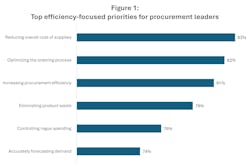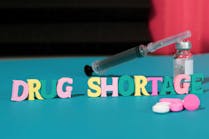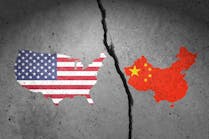State of Healthcare Procurement: Part 2: Mastering the 3 ‘P’s of Post-Pandemic Procurement Efficiency: Price, Process, Product
Editor’s note: This article is the second part in a three-part series exploring the challenges and opportunities facing healthcare procurement leaders as outlined in the 2024 Healthcare Procurement and AI playbook from Healthcare Purchasing News (HPN) and Staples Business Advantage (SBA). (See part one here.) Respondents’ comments have been lightly edited for length and clarity.
As the healthcare industry recovers from the pandemic’s peak, procurement leaders continue to face uncertain economic conditions, stubborn supply shortages, and a proliferation of new settings in their purview, among other aftershocks.
The Post-Pandemic Procurement Landscape
To overcome these challenges, a relentless focus on efficiency is crucial. According to the 170+ leaders surveyed for HPN and SBA’s 2024 Healthcare Procurement and AI report, efficiency is one of the three key mandates (alongside quality and innovation) shaping the future of procurement. In fact, six of the top 10 priorities identified by respondents center on streamlining core aspects of operation (see Figure 1).
The Three Pillars of Efficiency: Price, Process, and Product
Price
The top priority for most procurement leaders (83%) is reducing the overall cost of supplies; 76% of leaders aim to control rogue spending. Achieving these goals, however, can be difficult due to tightening budgets, rising costs, and lack of pricing clarity. “The greatest challenge is the transparency of pricing,” one respondent notes. “It’s being able to clearly understand the costs to assess the budget.”
To weather this perfect storm, experts recommend thinking outside the box. “In the days of very slim margins or negative margins, we are being asked to save the organization money,” explains Jack Koczela, director of analytics and transformation, supply chain, at Froedtert Health, a Wisconsin-based system with 10 hospitals and more than 45 health centers and clinics. “If we’re trying to pay our folks more to keep up with wage inflation, that money has to come from somewhere, and a lot of people are turning to non-labor spend.”
Although important, cost containment initiatives shouldn’t compromise safety and security, warns Daniel Uzupis, CHCIO, CDH-E, CISSP, chief information and information security officer at Union Community Care, a federally qualified health center with nearly 20 locations throughout Pennsylvania. According to McKinsey & Company, high-performing healthcare supply chains prioritize investments in strong data analytics, collaboration with frontline clinicians, and talent development.1
Process
- Optimizing the ordering process (82%)
- Increasing procurement efficiency (81%)
- Accurately forecasting demand (74%)
Implementing these improvements can be challenging due to external factors like ”fluctuating market conditions, complex vendor management, regulatory compliance, and balancing cost-effectiveness with quality standards,” one respondent notes.
Leaders can address these intricacies by identifying areas for simplification. One respondent explains, “There are too many repetitive tasks that consume time and elongate the procurement cycle.” Another emphasizes the importance of building capabilities in areas challenged by “disorganized purchasing, limited visibility, and risk of fraud and human errors.”
To create a more resilient supply chain, McKinsey recommends2 improving transparency and alignment. Internally, this could involve consolidating inventory data across locations, enhancing inventory systems, and building dashboards for a comprehensive view of organizational performance. Externally, collaborating with GPOs and distributors can also be beneficial. Contracts stipulating daily updates on inventory levels across all distribution centers can help anticipate and mitigate disruptions.
Product
Nearly 80% of procurement leaders are prioritizing the elimination of product waste as part of their optimization efforts. Technology plays a crucial role in achieving this goal. Jack Koczela emphasizes the value of data analysis. “We have to dig through a lot of data” to analyze and reduce waste, Koczela explains. If, however, an AI or machine learning model is trained on that information, it could “surface great results very quickly.”
Another key focus area for leaders is ensuring the timely availability of the right products. This helps to avoid situations where organizations must resort to using alternative options while waiting for backordered items. To address this challenge, McKinsey advises leaders to create contingency plans for their organization’s most critical items. These plans should consider factors like the life-saving potential of the product, availability of substitutes, frequency of use, and potential financial impact.
In conclusion, efficiency is the backbone of a healthy and resilient healthcare supply chain. By understanding the factors that can hinder or accelerate efficiency gains, procurement leaders can make informed decisions and navigate the current challenges successfully.
--
Staples Business Advantage is a trusted partner for procurement leaders at thousands of healthcare organizations nationwide. Partnerships with top GPOs enable clients to achieve significant cost savings while streamlining purchasing across multiple product categories, including EVS, furniture, breakroom, office supplies, and more. Learn more.
Sponsored by:







